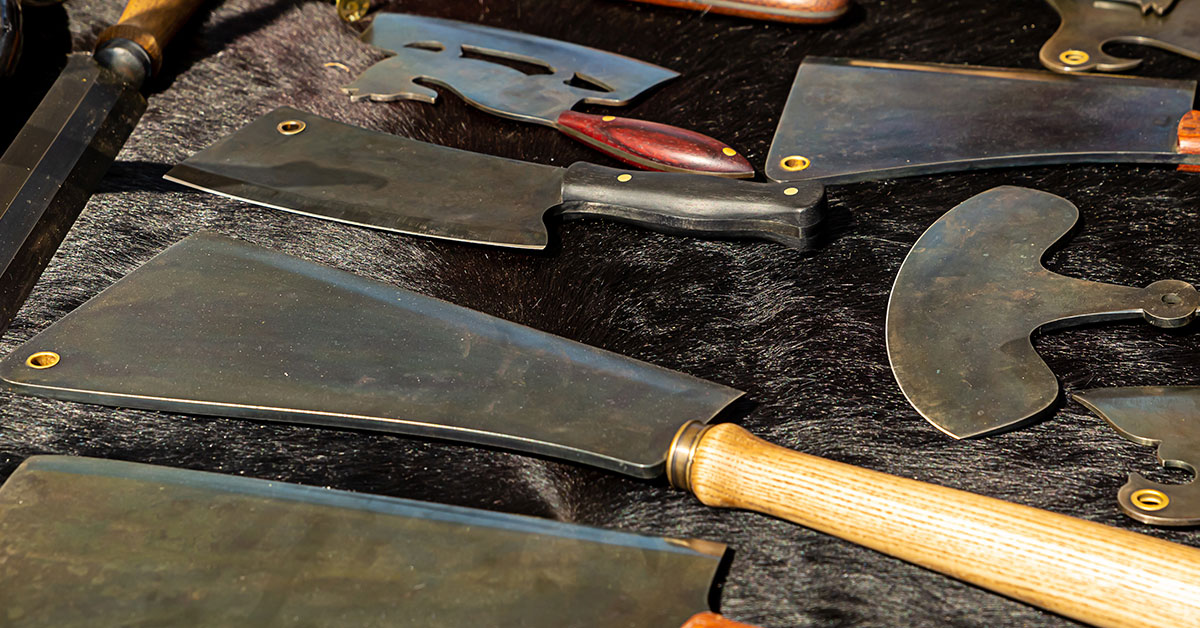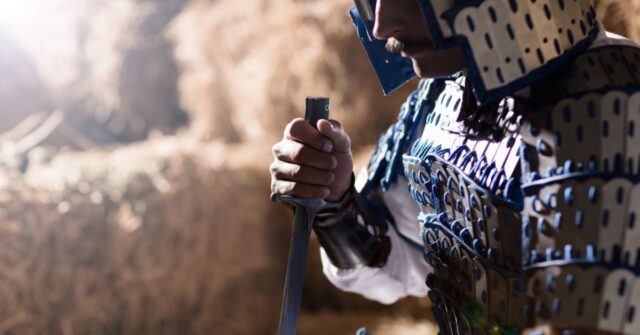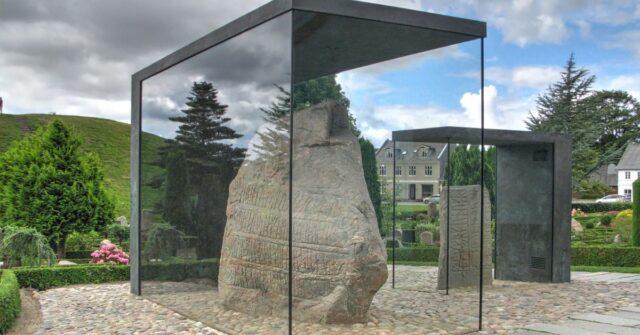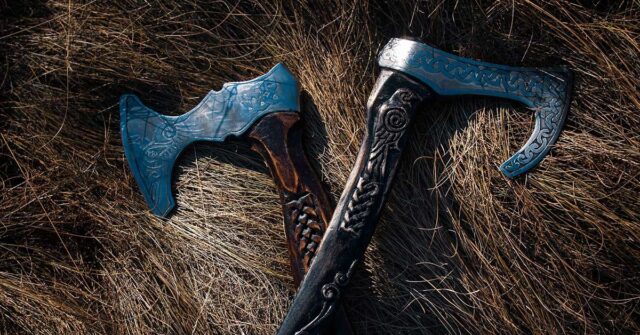The Vikings were known for their prowess in warfare and their innovative weapon designs. Throughout history, their weaponry and tactics evolved to meet the challenges they faced in various stages of their expansion.
This article explores the evolution of Viking weaponry, from the Early Viking Age to the Late Viking Age, as well as their advancements in siege warfare and maritime expansion.
Introduction to Viking Weaponry
The Vikings were renowned for their strength in warfare, which was a significant aspect of their culture.
Read on to explore the evolution of Viking weaponry through history and how it influenced their military strategies and tactics.
The Importance of Weapons in Viking Culture
Viking culture placed a great emphasis on the warrior ethos, with weapons playing a crucial role in their society.
Vikings viewed their weapons not only as tools for combat but also as symbols of social status and power.
Many warriors were buried with their weapons, demonstrating the deep connection between Vikings and their arms.
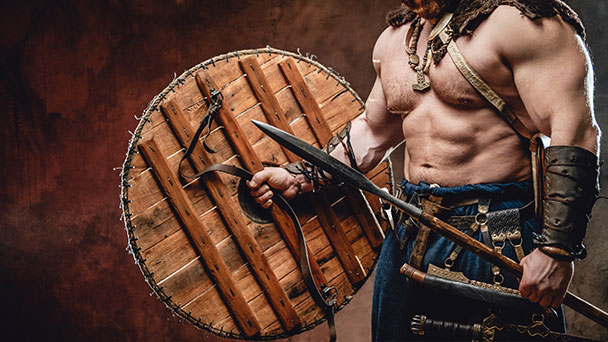
Primary Sources for Viking Weaponry
The primary sources for studying Viking weaponry include archaeological finds, written historical accounts, and depictions in Viking art.
These sources help historians and archaeologists piece together the development of Viking weapons and their use in warfare.
Early Viking Age Weapons (8th-9th Century)
In the Early Viking Age, the Vikings relied on a range of weapons, each serving a specific purpose in battle.
The primary weapons used during this period were spears, knives, bows and arrows, and axes. Let’s take a closer look at each of these weapons and their role in Viking warfare.
Spears
Spears were the primary weapon of choice for many Viking warriors, offering a cost-effective and versatile option on the battlefield.
These weapons could be used for both thrusting and throwing, allowing Vikings to engage their enemies from a distance or in close combat.
Types of Spears
Spears were the most common weapon used by Vikings in the early Viking Age. These ranged from simple wooden shafts with iron spearheads to more elaborate, ornate designs.
Two primary types of spearheads were used: the leaf-shaped head and the more slender, angon-type head.
Usage and Tactics
Viking spearmen often fought in formations, using their spears to keep enemies at bay and create openings for their fellow warriors.
In addition to thrusting, spears could also be thrown at enemies from a distance, providing a versatile and effective weapon for the early Viking warriors.
Knives and Seaxes
Knives and seaxes were essential tools for Vikings, both on and off the battlefield. They were used for various purposes, including cutting, carving, and close-quarters combat.
Their compact size and versatility made them a staple in the Viking warrior’s arsenal.
Design and Function
Knives and seaxes were essential tools for Vikings, serving both utilitarian and combat purposes.
These single-edged blades varied in size and shape, with some resembling modern-day hunting knives and others being more akin to short swords.
Evolution of Blade Styles
Over time, the designs of knives and seaxes evolved to accommodate different needs and preferences.
Early Viking blades were relatively simple, while later examples featured more elaborate decorations and inscriptions, reflecting their increased importance as symbols of status and power.
Bows and Arrows
Bows and arrows were crucial for Viking archers, providing a long-range option for engaging enemies.
The use of skilled archers allowed the Vikings to weaken enemy forces from a distance before engaging in melee combat, improving their chances of victory.
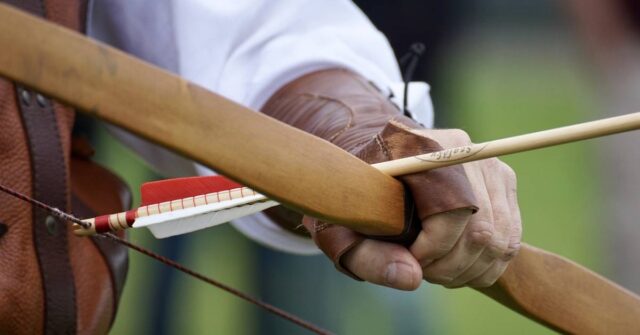
Types of Bows
Viking archers primarily used longbows made from yew or elm wood. These bows were powerful and accurate, capable of penetrating armor at considerable distances.
Arrowhead Design and Materials
Arrowheads were typically made from iron or bone and came in various shapes and sizes.
Some arrowheads were designed for armor penetration, while others were intended to inflict more significant wounds or cause debilitating pain.
Axes
Axes were a popular weapon among Viking warriors due to their versatility and effectiveness in combat.
They could be used for chopping, slashing, and hooking, making them a formidable weapon against a variety of opponents.
Axes also served practical purposes in daily life, such as woodcutting and tool making.
Types of Axes
Early Viking axes were primarily used for woodworking and other utilitarian purposes.
However, these axes also served as effective weapons in close combat, with their sharp blades and sturdy construction making them a formidable tool on the battlefield.
Combat and Utility Roles
Viking axes were versatile weapons, with warriors using them for chopping, slashing, and hooking techniques in combat.
The axes’ utility outside of battle also made them a popular choice among Vikings, as they could easily be used for various tasks in everyday life.
Shields
Shields were a vital part of Viking defensive equipment, protecting warriors from incoming blows during combat.
They were typically round and made from wooden planks, reinforced with leather or rawhide and an iron boss at the center.
The shield wall formation was a popular Viking tactic that relied heavily on the use of shields.
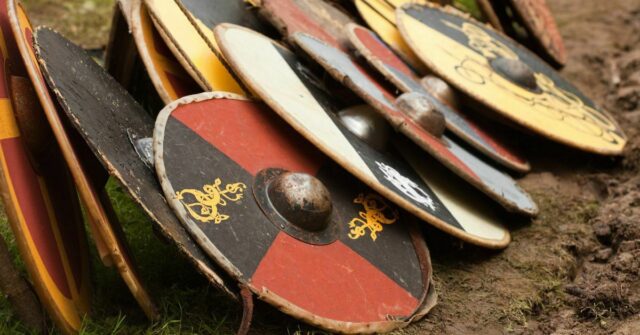
Construction and Materials
Viking shields were typically made from wooden planks, covered in leather or rawhide, and reinforced with an iron boss in the center.
The size of the shields varied, but they were generally round and large enough to cover the warrior’s torso.
Shield Wall Tactics
Viking warriors often fought in a formation known as the shield wall, where they would stand side by side, overlapping their shields to create a formidable defensive barrier.
This tactic allowed them to protect themselves from enemy attacks while still being able to strike back effectively.
Mid-Viking Age Weapons (10th Century)
During the 10th century, the Vikings began incorporating new and improved weapons into their arsenal.
Swords became more common, axe technology improved, and armor developments provided better protection on the battlefield.
These advancements significantly influenced Viking tactics and combat effectiveness.
Introduction of Swords
In the 10th century, swords became more common in Viking warfare, symbolizing wealth and status among warriors.
These double-edged weapons were made from high-quality steel, allowing for a strong and flexible blade. The introduction of swords marked an important shift in Viking weaponry and tactics.

Design and Materials
Swords became more prevalent in the 10th century, with various types and styles emerging. Viking swords were typically double-edged, with a broad blade and a straight crossguard.
They were made from high-quality steel, making them strong and flexible.
Symbolism and Social Status
Owning a sword was a symbol of wealth and status among Vikings, as swords were expensive to produce and maintain.
Warriors who possessed swords were often viewed as elite fighters, and their weapons would often be adorned with intricate decorations and inscriptions.
Improvements in Axe Technology
During the Mid-Viking Age, axe technology saw significant advancements, with the development of specialized axes like the Dane axe and the bearded axe.
These new designs improved the weapon’s reach, power, and versatility, enhancing the effectiveness of Viking warriors in battle.
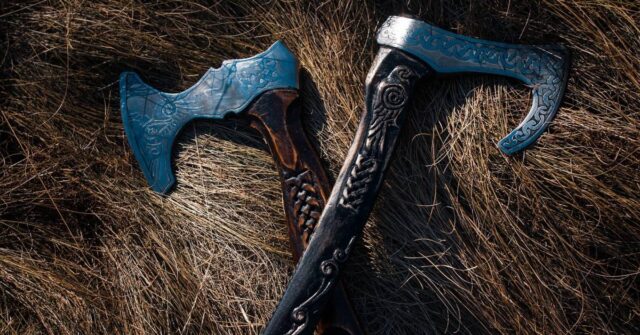
Dane Axe
The Dane axe, also known as the longaxe, was a larger and more specialized version of the typical Viking axe.
Its long handle allowed for greater reach and power, making it an ideal weapon for breaking through enemy formations and dealing devastating blows.
Bearded Axe
The bearded axe featured a unique blade design, with an extended lower edge that created a hook-like shape.
This allowed the wielder to hook an opponent’s shield or weapon, creating openings for additional attacks.
Armor Developments
As Viking weaponry evolved, so too did their armor. Chainmail and various helmet styles emerged during the Mid-Viking Age, offering improved protection against cutting and stabbing attacks.
These advancements in armor technology played a crucial role in shaping Viking combat tactics and effectiveness.

Chainmail
Chainmail became more common during the mid-Viking Age, providing warriors with added protection against cutting and stabbing attacks.
This armor consisted of interlocking metal rings, forming a flexible and durable protective layer.
Helmet Styles and Materials
Various helmet styles emerged during this period, including the simple conical design and the more elaborate spectacle helmet, which featured a fixed visor to protect the eyes and nose.
Helmets were typically made from iron or steel, providing vital protection for the head during combat.
Late Viking Age Weapons (11th Century)
The Late Viking Age saw further developments in weaponry, with swords continuing to evolve, enhanced spear and arrow technology, and the introduction of maces and war hammers.
These advancements allowed the Vikings to adapt to the ever-changing battlefield and face more heavily armored opponents effectively.
Continued Sword Evolution
Sword designs continued to evolve during the Late Viking Age, with the emergence of exceptional weapons like the Ulfberht sword.
The influence of Christianity also became more apparent in sword designs, with crosses and other religious symbols adorning these weapons.
Ulfberht Swords
The Ulfberht sword was a highly sought-after weapon in the late Viking Age, known for its exceptional quality and craftsmanship.
These swords were made using a unique steel composition, giving them unparalleled strength and sharpness.
Influence of Christian Iconography
As Christianity spread throughout the Viking world, its influence was seen in the designs of weapons, particularly swords.
Crosses and other Christian symbols began to appear on sword hilts and blades, reflecting the changing religious landscape and the blending of cultures.
Enhanced Spear and Arrow Technology
During the Late Viking Age, spear and arrow technology advanced with the introduction of barbed spearheads and long-range arrows.
These enhancements allowed Viking warriors to be even more effective in battle, striking their enemies with greater accuracy and causing more severe wounds.
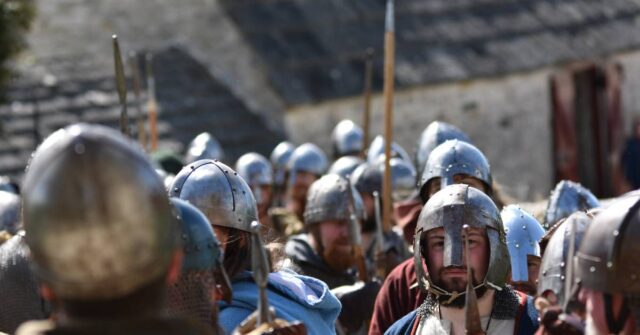
Barbed Spearheads
Barbed spearheads were introduced in the late Viking Age, featuring small hooks or barbs along the edges of the spearhead.
These barbs increased the weapon’s effectiveness, making it more difficult to remove from a target and causing more severe wounds.
Long-Range Arrows
Advancements in arrow technology during this period led to the development of longer-range arrows, which were more aerodynamic and accurate.
These arrows allowed Viking archers to engage their enemies from greater distances, further enhancing their effectiveness in battle.
Advanced Armor
In the Late Viking Age, armor technology continued to advance with the introduction of lamellar armor and improved helmet designs.
These developments provided better protection and coverage for the warriors, allowing them to face heavily armored opponents with greater confidence.
Lamellar Armor
Lamellar armor, made of small overlapping plates, began to appear in the late Viking Age.
This type of armor offered improved protection compared to chainmail, while still allowing for flexibility and ease of movement.
Improved Helmet Designs
Helmets continued to evolve in the late Viking Age, with new designs offering better protection and comfort for the wearer.
Some helmets included additional features like cheek plates and mail aventails, which provided increased coverage for the face and neck.
Introduction of Maces and War Hammers
Maces and war hammers made their appearance during the Late Viking Age, providing a solution for combating heavily armored foes.
These weapons were designed to deliver powerful crushing blows that could penetrate or even shatter armor, making them a valuable addition to the Viking warrior’s arsenal
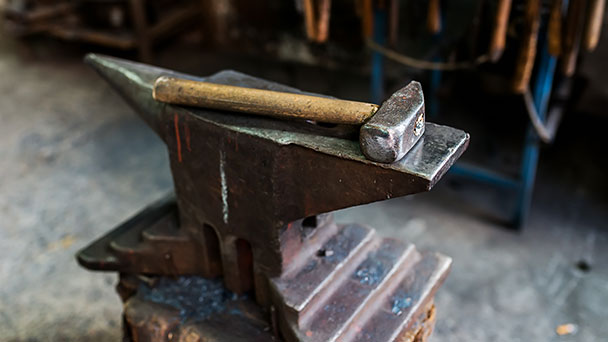
Design and Usage
Maces and war hammers emerged as effective weapons against heavily armored opponents.
These blunt-force weapons were designed to deliver powerful blows that could crush armor and inflict devastating injuries.
Effectiveness Against Armor
As armor technology advanced, so too did the need for weapons that could penetrate or bypass it.
Maces and war hammers were specifically designed to combat heavily armored foes, making them a valuable addition to the Viking warrior’s arsenal.
Viking Siege Warfare
Viking warfare was not limited to open-field battles, as they also engaged in siege warfare to conquer fortified settlements.
The Vikings utilized a range of siege engines, tactics, and equipment to breach and overcome enemy defenses, showcasing their versatility and strategic prowess in warfare.
Siege Engines
Vikings utilized various siege engines to conquer fortified settlements, such as battering rams and trebuchets.
These powerful devices were instrumental in breaching walls and gates, allowing the Viking forces to infiltrate and overwhelm enemy defenses during siege warfare.
Battering Rams
Vikings employed battering rams during sieges to breach fortified walls and gates.
These rams were typically constructed from large logs, sometimes reinforced with iron or steel, and mounted on a wheeled platform for mobility.
Trebuchets
Although not as common, trebuchets were occasionally used by Vikings during sieges.
These powerful siege engines were capable of launching heavy projectiles over great distances, causing significant damage to fortifications and enemy troops.
Scaling Ladders and Siege Towers
Scaling ladders and siege towers were used by Vikings to overcome the defenses of fortified settlements.
These devices allowed warriors to climb over walls and engage their enemies directly, often leading to fierce and brutal hand-to-hand combat.
Fortification Breaching Tactics
Vikings employed various tactics to breach enemy fortifications, including using fire, sapping, and tunneling.
These methods were designed to weaken or bypass walls, gates, and other defenses, allowing Viking forces to penetrate and conquer enemy strongholds.
Viking Weaponry and Maritime Expansion
The Vikings were skilled seafarers, and their maritime expansion played a significant role in their military success.
Their weaponry and tactics adapted to the unique challenges of naval warfare, contributing to their dominance at sea and their influence on foreign weaponry and armor.
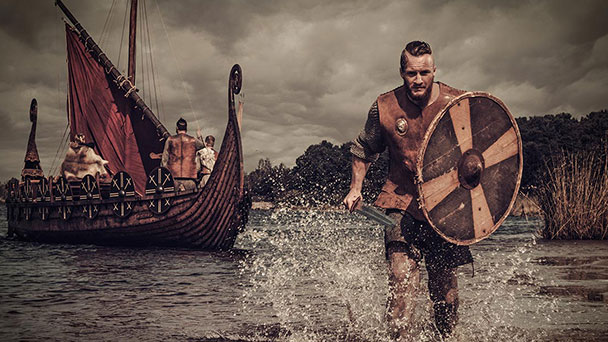
Weaponry Adaptation for Shipborne Combat
Viking weaponry was adapted for use in naval warfare, with modifications made to accommodate the unique challenges of fighting at sea.
Axes, spears, and swords were commonly used in shipborne combat, allowing warriors to engage in close-quarters combat on the decks of their longships.
Naval Warfare Tactics
Naval warfare played a crucial role in Viking expansion, with their longships allowing them to traverse vast distances and raid coastal settlements.
Vikings employed various naval tactics, including hit-and-run raids, blockades, and boarding enemy vessels to gain control of their ships and cargo.
Influence on Foreign Weaponry and Armor
The Viking influence extended beyond their own territories, impacting the weaponry and armor of other cultures.
As the Vikings traded, raided, and settled in new lands, their weapons and armor designs spread, influencing the development of military technology in regions such as England, Ireland, and mainland Europe.
Conclusion
The evolution of Viking weaponry throughout history highlights the adaptability and ingenuity of these fierce warriors.
From their early reliance on spears, knives, and axes to the introduction of advanced armor and siege tactics, the Vikings consistently adapted their weaponry and tactics to the ever-changing challenges they faced.
The legacy of Viking weaponry continues to be a subject of fascination for historians and enthusiasts alike, offering valuable insights into this remarkable period in history.
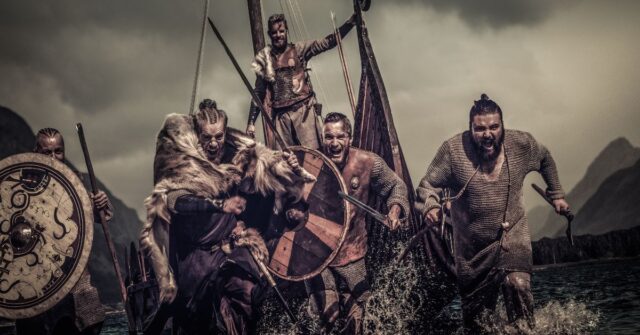
The Legacy of Viking Weaponry
Viking weaponry has left a lasting legacy in the history of warfare, showcasing the innovative and adaptable nature of these fierce warriors.
The Vikings’ weapons and armor evolved over time to meet the challenges they faced, reflecting their ever-changing world and the shifting balance of power in the regions they inhabited.
Archaeological Discoveries and Modern Interpretations
Through archaeological discoveries and careful study of historical sources, we continue to learn more about the evolution of Viking weaponry and its impact on history.
These findings offer valuable insights into the lives of Viking warriors and the societies they shaped, providing a deeper understanding of this fascinating period in history.

